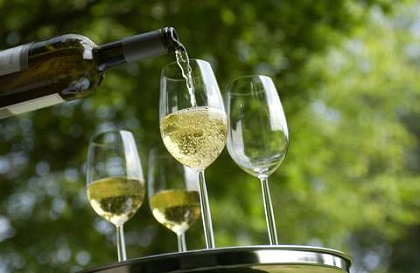
It would be interesting for true wine connoisseurs to know about the origin of German wine and its history, starting with Romans in the first century, proceeding to the Middle Ages, and ending up at present time.
It is no secret that the base of a good wine is good grapes. Germany is rich in different sorts of grapes. The vintners affirm that the taste of wine depends mostly on the region of its cultivation and particularly on the soil where it grows, that the climate is not the most important aspect of grapes’ quality. Most people use to think that the sun affects the sweetness and flavor of grapes, but it is a common delusion. The most delicious wine can be produced from the grapes grown on the northern slopes where the sun is a rare guest!
German wines owe its fame to the vineyards where the skillful vintners do their best to produce splendid wines and to compete with each other to gain the awards. There is an ever continuing matter of controversy as to which wine is preferable: dry or sweet? It is well known that tastes differ, but majority of Germans do recognize dry wines from Baden, Franken, or the Pfalz. Considering them no match to sweet Kabinett wines, Germans do not wonder why dry Auslesen wines keep winning prizes.
Having cleared up the theoretical and historical aspects of wine-producing, let’s proceed to the practical part – that of wine-consuming. It is high time now to get the tips on how to choose a good wine. You should pay close attention to the three factors determining the quality and taste of the wine: 1) the names of the Estate and Winemaker; 2) the vineyard sites; 3) the vintage. The wine’s age is not always valued according to the principle “the older – the better”. There is still a hazard for some wines to overage.
Most of the information about the wine’s characteristics is shown on the bottle’s label. It is very important to be able to read it so that the bottle wouldn’t puzzle you with the variety of unknown terms and figures.
Wine and food always go together. It is difficult to imagine drinking wine without the slightest refection. The point is that there are basic guidelines and specific recommendations for pairing German wine and food. You can get to know which wine is best for grilled fish in herb and olive oil, or for roasted venison in cold fruity sauce. By the way, both dishes are best served with Riesling, Scheurebe, and Spatburgunder, dry full-flavored wines. The links specified above will give you hints as for any dish to the wine you have, and accordingly you will be able to line up appropriate wine to the food you have prepared.
Due to the proven beneficial effects, white wine is an ideal supplement to modern healthy nutrition.
For people anxious about their health there are specially compiled questions and answers concerning the wine-health correlation.
Finally, wine-admirers are bound to know about the proper serving of wines. Aesthetics should be observed even while consuming wine at the old friends’ party. Everything must be perfect: tulip-shaped bowls, the quantity of the wine poured into them, its temperature, the right choice of food, flawlessly laid table, and your intuition will prompt you all the rest.
History of German Wine
The story of German wine is a captivating journey through centuries of tradition, craftsmanship, and innovation. From the rolling vineyards along the Rhine and Mosel rivers to the quaint winemaking villages nestled in the valleys, Germany has been an integral part of the wine world for over a millennium.
